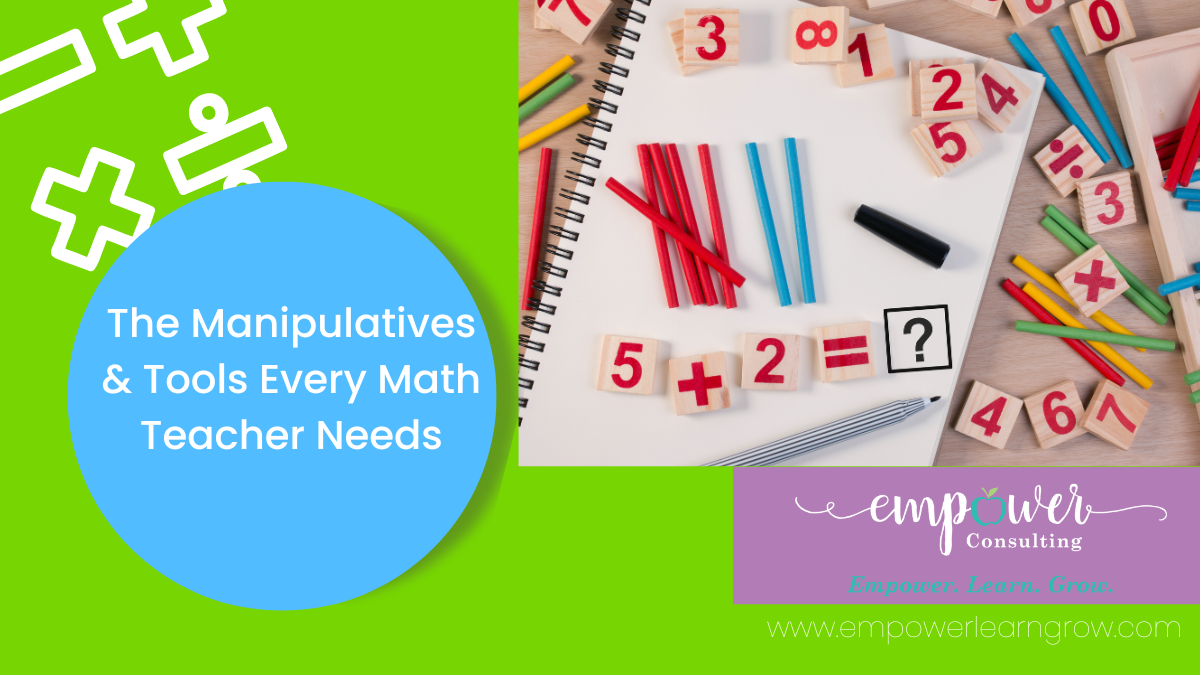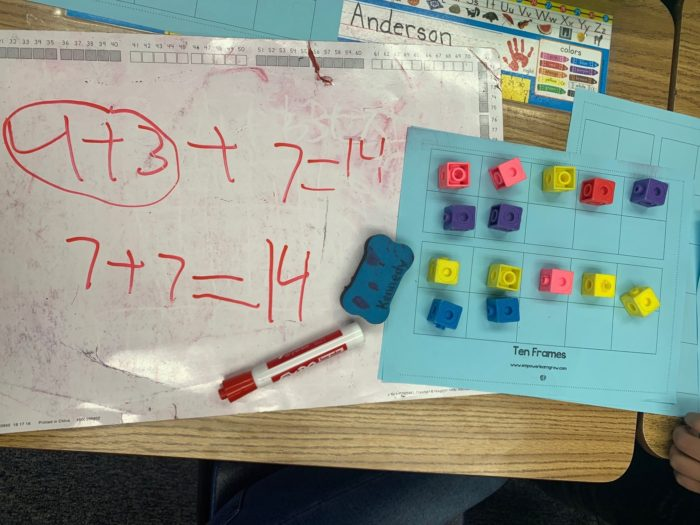The Manipulatives and Tools Every Math Teacher Needs to Have in their Classroom

This blog post is all about my favorite math tools and math manipulatives for the classroom. This post is great for anyone restocking for next school year or building manipulative tool kits over the summer.
(This post does contain affiliate links of my actual favorite math tools along with some free downloads!)

PLACE VALUE CARDS
I LOVE place value cards. In the Math Expressions series, they call them Secret Code Cards (click here to download), but I’ve seen them called place value cards or number value cards. The best kind are those with the visual quantity representations on the back. So, when my sweet kindergarten students try to build 15 with a one-card and a 5 five-card, they turn them over and count the dots only to realize they made 6, not 15. The ‘hiding’ zero helps to drive home the actual quantity. Fifteen is a group of ten and five extra ones. These cards can be used in the entire Numbers in Base ten standard progression, including to add, subtract, and round in your classroom.

TEN FRAMES
I also love ten frames. I don’t think all students need them, but in building subitizing skills and fact strategies, they can be a godsend!

COUNTERS
When it comes to using counters during math class, I prefer using only two colors. Having only two colors of counters helps students build partners or combinations of numbers, visually. If I put out 7 red and blue tiles, I know 7 is my total and the partners are 3 and 4 because I can see three red and four yellow. Counters can be used for so many things in math, including adding, subtracting, and counting, when working with number charts or playing games!!
I really love these two-sided foam counters with only two colors.
These transparent counters are so much fun to use during math games.
PLACE VALUE BLOCKS
Place value blocks fit well here as well. But, my favorite are the ones that come apart to show decomposing and composing of numbers.

I love fraction strips (both the marked and unmarked set), play money (bills & coins), and place value blocks for the upper grade levels.
Manipulatives and math tools aren't just for younger students and have a place in the upper grades too!
With an emphasis on fractions and decimals in fourth and fifth grade, I believe students who can build it first have created experiences of which to anchor their future math drawings and algorithms. Although students in the upper grades can benefit from using math manipultiaves, I don’t think they need to use them every day.
I’d argue math drawings can show quantity, conceptual understanding, just as well as the real tools, and are more transferable and efficient. Math drawings can communicate thinking over time, whereas once manipulatives are picked up, seemingly the thinking goes with them. So, I love math manipulatives, and I believe they should be used to create mathematical experiences.

Place value blocks can be used to teach division. This can be done by playing out the steps in our numeric methods. Play money can also be used to play out what to do with the decimal. These experiences were about a class period long, but stayed with students the remainder of the year. We always had those experiences to anchor new learning. “Remember, this amount that’s left? When we were dividing paper clips (ie. place value blocks), do you remember what we did with the leftovers?”
These experiences shouldn’t be skipped and can be connected to representations.

I also love these one-inch square tiles-they are so versatile! You can use them to teach distributive property, area, perimeter, multiplication, division, and of course for counting collections.

DICE
Of course, all classrooms should have LOTS of dice. I love regular die (this set has fun colors!), big die, ten-sided die, and even these blank dice for filling in filling in fractions, decimals, percents, and numbers greater than 6.
PLASTIC SLEEVES
I love these plastic sleeves because they are durable and they allow me to turn any math page into a reproducible. I use them for my counting mats where students can write on them, but also build on them with math manipulatives! (Updated link to the 10x14 sleeves-- way easier to fit your 8x11 sheets of paper).

NUMBER CHARTS
Number charts are a natural scaffold and extension for students. They aid counting, adding, patterning, place value, derived strategies, and more.
I love the idea of using number charts to make the morning math routines repeatable independently. Meaning, if we add one more every day to our 120 chart, find the sums of 10, count to the total, etc. then putting a 120 chart in a plastic sleeve allows students to repeat this routine as an independent activity. I find students of EVERY age benefit from number charts. You can get them for whole numbers, decimals, large numbers, and small numbers.

Here are a few extra resources that may help you with your math manipulatives:
- Storing manipulatives for home & school
- Links to labels for Math Tools & Manipulatives Storage by Lisa Gomez and Lori Shubat
- Click here for freebie link to a full manipulative kit suggestion for each grade level.
- If you are a Math Expressions User, join our private Facebook Group here.
Click each manipulative picture to be directed to the link!
 |  |
 |  |
 |  |
 |  |
 |  |
 |  |
 |  |
 |  |
 |  |
 |  |
 |  |
 Shannon Kiebler
Shannon Kiebler 